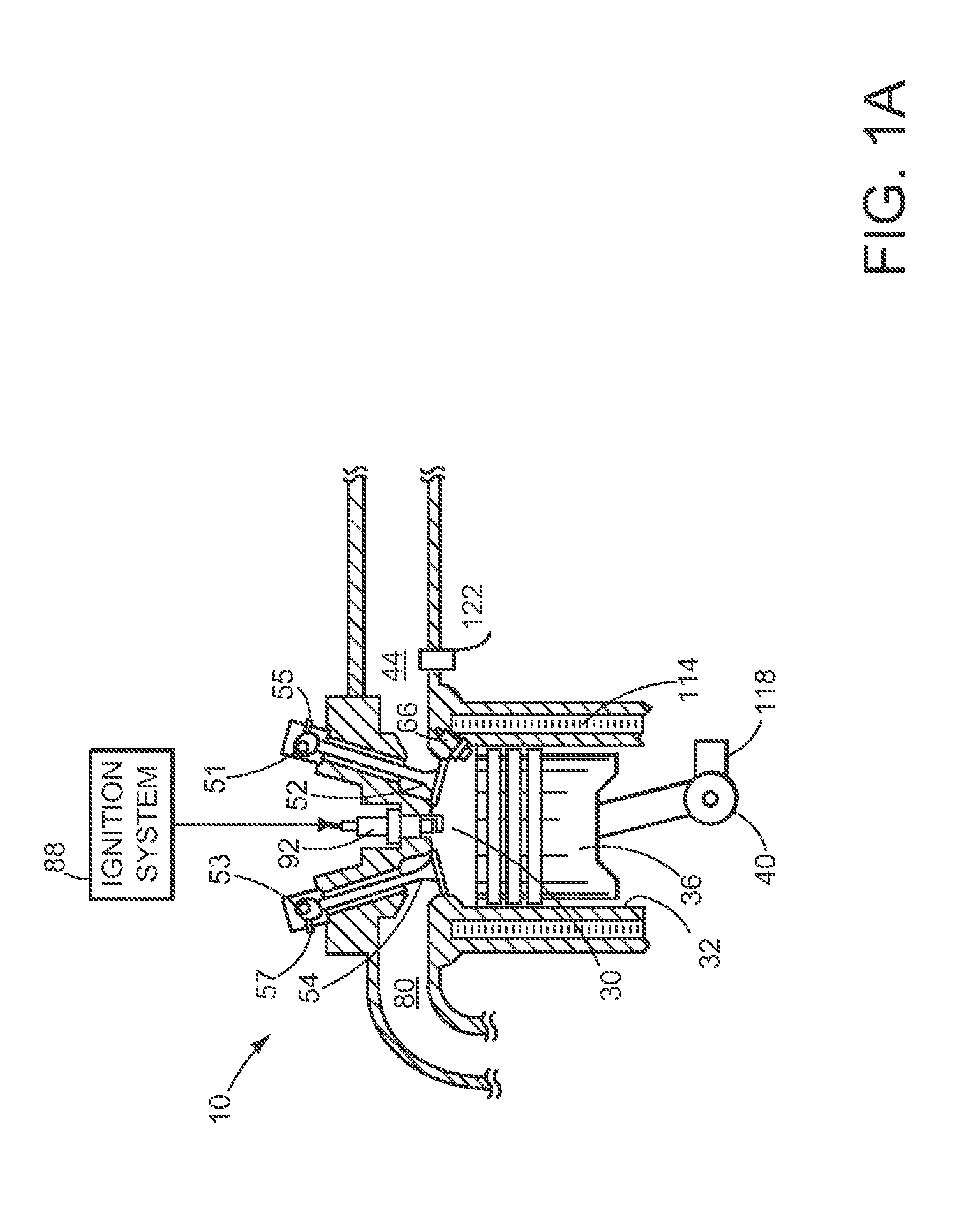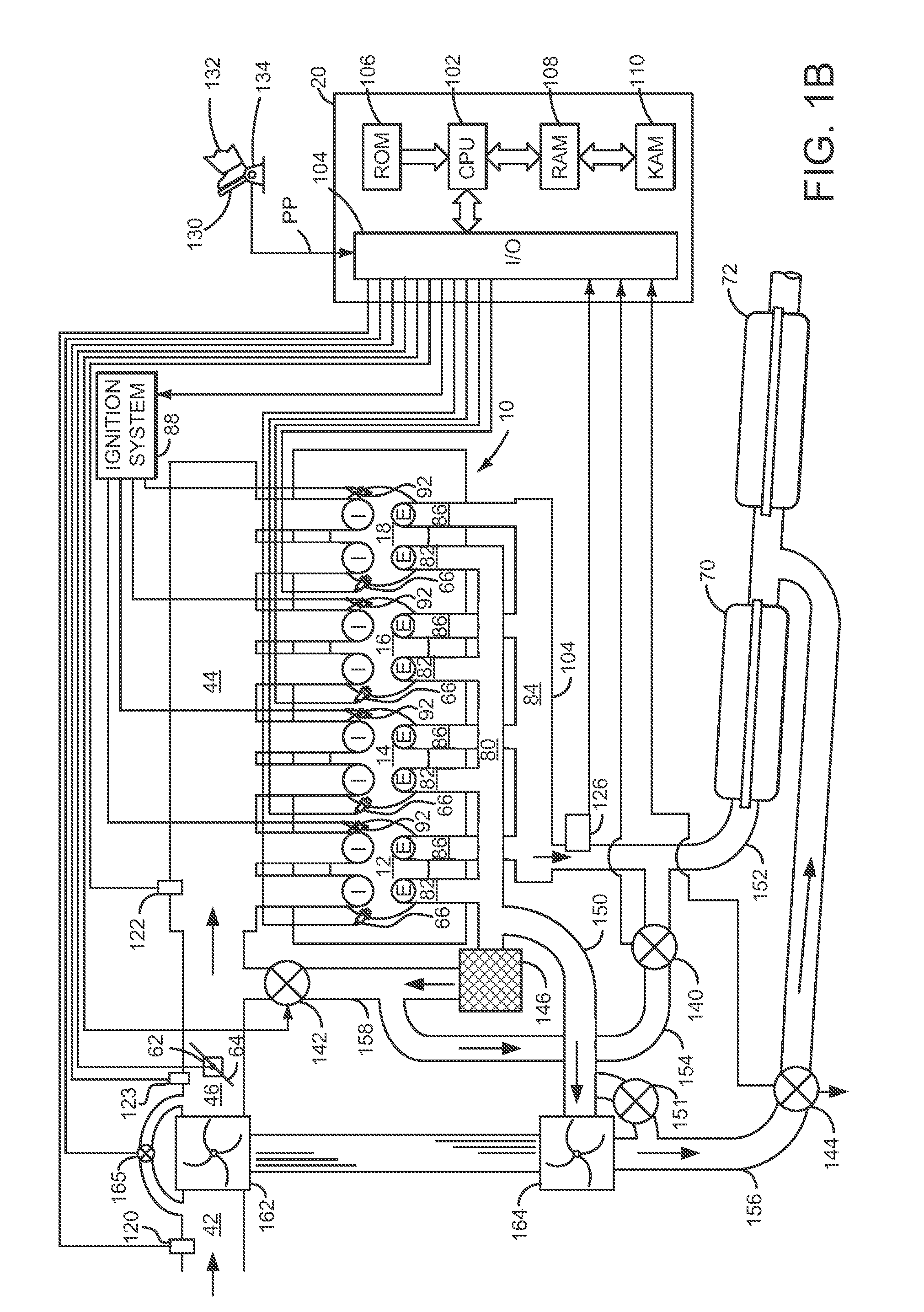Method and system adjusting an exhaust heat recovery valve
a heat recovery valve and exhaust heat technology, applied in the direction of machines/engines, output power, electric control, etc., can solve the problems of difficult control of turbocharger compressor surge under some engine operating conditions, degraded performance of the exhaust heat recovery valve, and increased turbocharger output power, etc., to increase engine efficiency, reduce engine displacement, and boost the effect of the engin
- Summary
- Abstract
- Description
- Claims
- Application Information
AI Technical Summary
Benefits of technology
Problems solved by technology
Method used
Image
Examples
Embodiment Construction
[0016]The present description is related to operating an engine. In one non-limiting example, the engine may be configured as illustrated in FIGS. 1A and 1B. In one example, blow-down gases of a cylinder are separated from residual cylinder gases and the engine is operated according to the methods of FIGS. 4A-4B providing the signals of FIGS. 2-3. Further, if operation of a turbocharger waste-gate or vane position adjustment degrades, a heat recovery valve is operated according to the method of FIG. 5 to operate similar to a waste-gate, thereby allowing the engine boost to be controlled.
[0017]Referring to FIG. 1A, a single cylinder of an internal combustion engine 10 is shown. Internal combustion engine 10 is comprised of a plurality of cylinders as shown in FIG. 2. Engine 10 includes combustion chamber 30, coolant sleeve 114, and cylinder walls 32 with piston 36 positioned therein and connected to crankshaft 40. Combustion chamber 30 is shown communicating with intake manifold 44 a...
PUM
 Login to View More
Login to View More Abstract
Description
Claims
Application Information
 Login to View More
Login to View More - R&D
- Intellectual Property
- Life Sciences
- Materials
- Tech Scout
- Unparalleled Data Quality
- Higher Quality Content
- 60% Fewer Hallucinations
Browse by: Latest US Patents, China's latest patents, Technical Efficacy Thesaurus, Application Domain, Technology Topic, Popular Technical Reports.
© 2025 PatSnap. All rights reserved.Legal|Privacy policy|Modern Slavery Act Transparency Statement|Sitemap|About US| Contact US: help@patsnap.com



